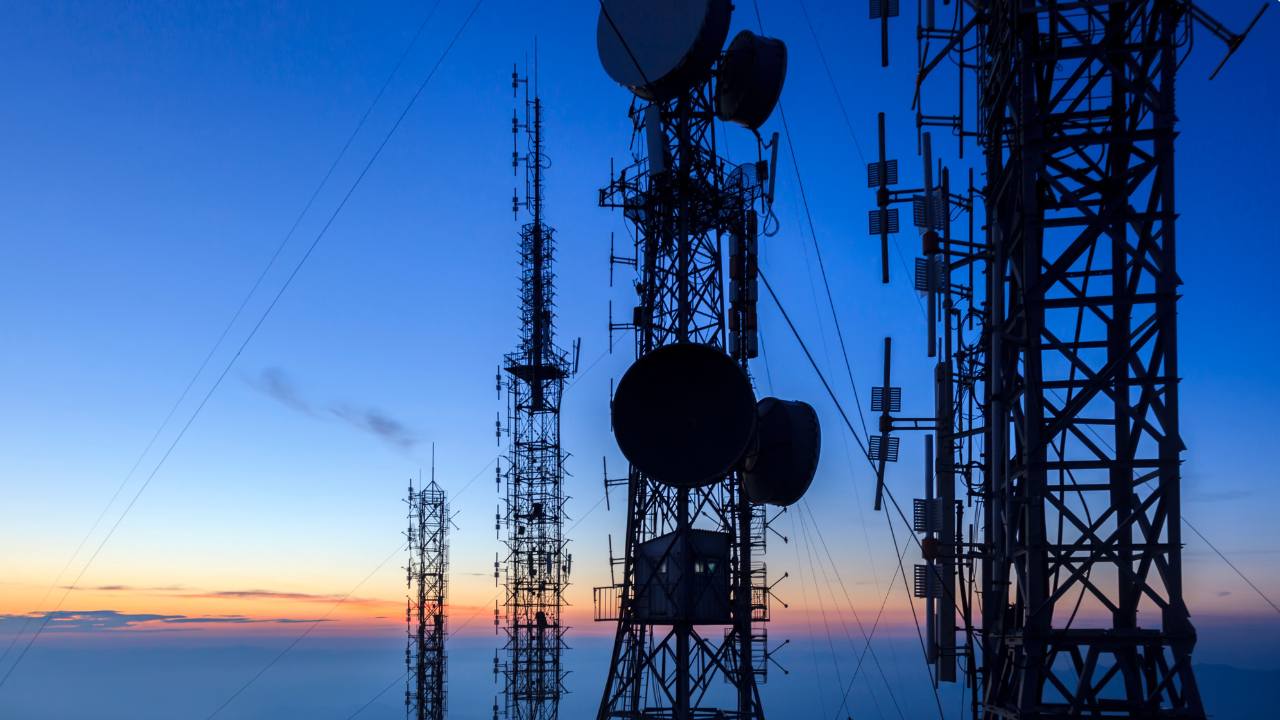Kaiser Health News
Need to Get Plan B or an HIV Test Online? Facebook May Know About It

by Darius Tahir and Simon Fondrie-Teitler, The Markup
Fri, 30 Jun 2023 12:01:00 +0000
Looking for an at-home HIV test on CVS’ website is not as private an experience as one might think. An investigation by The Markup and KFF Health News found trackers on CVS.com telling some of the biggest social media and advertising platforms the products customers viewed.
And CVS is not the only pharmacy sharing this kind of sensitive data.
We found trackers collecting browsing- and purchase-related data on websites of 12 of the U.S.’ biggest drugstores, including grocery store chains with pharmacies, and sharing the sensitive information with companies like Meta (formerly Facebook); Google, through its advertising and analytics products; and Microsoft, through its search engine, Bing.
The tracking tools, popularly called “pixels,” collect information while a website runs. That information is often sent to social media firms and used to target ads, either to you personally or to groups of people that resemble you in demographics or habits. In previous investigations, The Markup found pixels transmitting information from the Department of Education, prominent hospitals, telehealth startups, and major tax preparation companies.
Pharmacy retailer websites’ pixels send a shopper’s IP address — a sort of mailing address for a person’s computer or household internet — to social media giants and other firms. They also send cookies, a way of storing information in a user’s browser that in this case helps track a user from page to page as the user browses a retailer’s site. Cookies can sometimes also associate individuals on a site with their account on a social media platform. In addition to the IP address and cookies, the pixels often send information about what you’ve clicked or bought, including sensitive items, such as HIV tests.
“HIV testing is the gateway to HIV prevention and treatment services,” said Oni Blackstock, the founder of Health Justice and a former assistant commissioner for the New York City Bureau of HIV/AIDS Prevention and Control, in an interview.
“People living with HIV should have control over whether someone knows their status,” she said.
Many retailers shared other detailed interaction data with advertising platforms as well. Ten of the retailers we examined alerted at least one tech platform when shoppers clicked “add to cart” as they shopped for retail goods, a capacious category that included sensitive products like prenatal vitamins, pregnancy tests, and Plan B emergency contraception.
Supermarket giant Kroger, for instance, informed Meta, Bing, Twitter, Snapchat, and Pinterest when a shopper added Plan B to the cart, and informed Google and Nextdoor, a social media platform on which people from the same neighborhood gather in forums, that a shopper had visited the page for the item. Walmart informed Google’s advertising service when a shopper browsed the page of an HIV test, and Pinterest when that shopper added it to the cart.
A previous investigation from The Markup found that Kroger used loyalty cards to track, analyze, and sell an array of data about customers to advertisers.
Using Chrome DevTools, a tool built into Google’s Chrome browser, The Markup and KFF Health News visited the websites of 12 of the U.S.’ biggest drugstores and examined their network traffic. This monitoring tool allowed us to see what information about shopping habits and, in some cases, prescriptions, were sent to third parties.
Over the course of the investigation, retailers frequently changed their trackers — sometimes activating them, sometimes removing them. Some retailers appeared to be taking steps to limit tracking on sensitive items.
For example, Walgreens’ website prevented some trackers from activating on the pages of some products, which included Plan B and HIV tests. This code didn’t prevent all tracking, though: Walgreens’ site continued sending Pinterest information about those sensitive items a user added to the cart.
Walgreens shared a new policy after learning of The Markup and KFF Health News’ findings. Spokesperson Fraser Engerman said that while the chain already had a “robust privacy program,” it would no longer share browsing data related to reproductive health and HIV testing. Engerman also told us that “Pinterest confirmed that the data will be deleted and that it has not been used for advertising purposes.” Crystal Espinosa, a spokesperson for Pinterest, said the company “can confirm that we will be deleting the data Walgreens requested.”
The Pharmacy vs. the Pharmacy Aisle
In the U.S., drugstores and grocery stores with associated pharmacies are only partially covered by the Health Insurance Portability and Accountability Act, or HIPAA. The prescriptions picked up from the pharmacy counter do have this protection.
But in a separate section, sometimes confusingly called the pharmacy aisle, stores also often sell over-the-counter medications, tests, and other health-related products. Consumers might think such purchases have similar protections to their prescriptions, but HIPAA only covers the pharmacy counter’s clinical operations, such as dispensing prescriptions and answering patients’ questions about medication.
This distinction can be confusing enough inside the brick-and-mortar location of a retailer. But the line can become even harder to make out on a website, which lacks the clarifying delineations of physical space.
What’s more, descriptions about what will happen with retail data are generally in retailers’ privacy policies, which can usually be found in a link at the bottom of their webpages. The Markup and KFF Health News found them murky at best, and none of them were specific about the parts of the site that were covered by HIPAA and the parts that weren’t.
In the “Privacy Notice for California Residents” part of its privacy policy, Kroger says it processes “personal information collected and analyzed concerning a consumer’s health.” But, the policy continues, the company does not “sell or share” that information. Other information is sold: According to the policy, in the last 12 months, the company sold or shared “protected classification characteristics” to outside entities like data brokers.
Kroger spokesperson Erin Rolfes said the company strives to be transparent and that, “in many cases, we have provided more information to our customers in our privacy notices than our peers.”
Brokering of general retail data is widespread. Our investigation found, though, that some websites shared sensitive clinical data with third parties even when that information would be protected at a HIPAA-covered pharmacy counter. Users attempting to schedule a vaccine appointment at Rite Aid, for example, must answer a survey first to gauge eligibility.
This investigation found that Rite Aid has sent Facebook responses to questions such as:
- Do you have a neurological disorder such as seizures or other disorders that affect the brain or have had a disorder that resulted from a vaccine?
- Do you have cancer, leukemia, AIDS, or any other immune system problem?
- Are you pregnant or could you become pregnant in the next three months?
The Markup and KFF Health News documented Rite Aid sharing this data with Facebook in December 2022. In February of this year, a proposed class-action lawsuit based on similar findings was filed against the drugstore chain in California, alleging code on Rite Aid’s website sent Facebook the time of an appointment and an identifier for the appointment location, demographic information, and answers to questions about vaccination history and health conditions. Rite Aid has moved to dismiss the suit.
After the lawsuit was filed, The Markup and KFF Health News tested Rite Aid’s website again, and it was no longer sending answers to vaccination questions to Facebook.
Rite Aid isn’t the only company that sent answers to eligibility questionnaires to social media firms. Supermarkets Albertsons, Acme, and Safeway, which are owned by the same parent company, also sent answers to questions in their vaccination intake form — albeit in a format that requires cross-referencing the questionnaire’s source code to reveal the meaning of the data.
Using the Firefox web browser’s Network Monitor tool, and with the help of a patient with an active prescription at Rite Aid, KFF Health News and The Markup also found Rite Aid sending the names of patients’ specific prescriptions to Facebook. Rite Aid kept sharing prescription names even after the company stopped sharing answers to vaccination questions in response to the proposed class action (which did not mention the sharing of prescription information). Rite Aid did not respond to requests for comment, and as of June 23, the pixel was still present and sending the names of prescriptions to Facebook.
Other companies shared data about medications from other parts of their sites. Customers of Sam’s Club and Costco, for example, can search names of prescriptions on each retailer’s website to find the local pharmacy with the cheapest prices. But the two websites also sent the name of the medication the user searched for, along with the user’s IP address, to social media companies.
Many of the retailers The Markup and KFF Health News looked at did not respond to questions or declined to comment, including Costco and Sam’s Club. Albertsons said the company “continually” evaluates its privacy practices. CVS said it was compliant with “applicable laws.”
Kroger’s Rolfes wrote that the company’s “trackers disclose product information, which is not sensitive health information unless one or more inferences are made. Kroger does not make any inferences linking the product information collected or disclosed by trackers to an individual’s health condition.”
A Huge Regulatory Challenge
Pharmacies are just one facet of a huge health care sector. But the industry as a whole has been roiled by disclosures of tracking pixels picking up sensitive clinical data.
After an investigation by The Markup in June 2022 found widespread use of trackers on hospital websites, regulatory and legal attention has homed in on the practice.
In December, the Department of Health and Human Services’ Office for Civil Rights published guidance advising health providers and insurers how pixel trackers’ use can be consistent with HIPAA. “Regulated entities are not permitted to use tracking technologies in a manner that would result in impermissible disclosures” of protected health information to tracking technology or other third-party vendors, according to the official bulletin. If implemented, the guidance would provide a path for the agency to regulate hospitals and other providers and fine those who don’t follow it. In an interview with an industry publication in late April, the director of the Office for Civil Rights said it would be bringing its first enforcement action for pixel use “hopefully soon.”
Lobbying groups are seeking to confine any regulatory fallout: The American Hospital Association, for example, sent a letter on May 22 to the Office for Civil Rights asking that the agency “suspend or amend” its guidance. The office, it claimed, was seeking to protect too much data.
This year the Federal Trade Commission has pursued action against companies like GoodRx, which offers prescription price comparisons, and BetterHelp, which offers online therapy, for alleged misuse of data from questionnaires and searches. The companies settled with the agency.
Health care providers have disclosed to the federal government the potential leakage of nearly 10 million patients’ data to various advertising partners, according to a review by The Markup and KFF Health News of breach notification letters and the Office for Civil Rights’ online database of breaches. That figure could be a low estimate: A new study in the journal Health Affairs found that, as of 2021, almost 99 percent of hospital websites contained tracking technologies.
One prominent law firm, BakerHostetler, is defending hospitals in 26 legal actions related to the use of tracking technologies, lawyer Paul Karlsgodt, a partner at the firm, said during a webinar this year. “We’ve seen an absolute eruption of cases,” he said.
Abortion- and pregnancy-related data is particularly sensitive and driving regulatory scrutiny. In the same webinar, Lynn Sessions, also with BakerHostetler, said the California attorney general’s office had made specific investigative requests to one of the firm’s clients about whether the client was sharing reproductive health data.
It’s unclear whether big tech companies have much interest in helping secure health data. Sessions said BakerHostetler had been trying to get Google and Meta to sign so-called business associate agreements. These agreements would bring the companies under the HIPAA regulatory umbrella, at least when handling data on behalf of hospital clients. “Both of them, at least at this juncture, have not been accommodating in doing that,” Sessions said. Google Analytics’ help page for HIPAA instructs customers to “refrain from using Google Analytics in any way that may create obligations under HIPAA for Google.”
Meta says it has tools that attempt to prevent the transfer of sensitive information like health data. In a November 2022 letter to Sen. Mark Warner (D-Va.) obtained by KFF Health News and The Markup, Meta wrote that “the filtering mechanism is designed to prevent that data from being ingested into our ads.” What’s more, the letter noted, the social media giant reaches out to companies transferring potentially sensitive data and asks them to “evaluate their implementation.”
“I remain concerned the company is too passive in allowing individual developers to determine what is considered sensitive health data that should remain private,” Warner told The Markup and KFF Health News.
Meta’s claims in its letter to Warner have been repeatedly questioned. In 2020, the company itself acknowledged to New York state regulators that the filtering system was “not yet operating with complete accuracy.”
To test the filtering system, Sven Carlsson and Sascha Granberg, reporters for SR Ekot in Sweden, set up a dummy pharmacy website in Swedish, which sent fake, but plausible, health data to Facebook to see whether the company’s filtering systems worked as stated. “We weren’t warned” by Facebook, Carlsson said in an interview with KFF Health News and The Markup.
Carlsson and Granberg’s work also found European pharmacies engaged in activities similar to what The Markup and KFF Health News have found. The reporters caught a Swedish state-owned pharmacy sending data to Facebook. And a recent investigation with The Guardian found the U.K.-based pharmacy chain LloydsPharmacy was sending sensitive data — including information about symptoms — to TikTok and Facebook.
In response to questions from KFF Health News and The Markup, Meta spokesperson Emil Vazquez said, “Advertisers should not send sensitive information about people through our Business Tools. Doing so is against our policies and we educate advertisers on properly setting up Business Tools to prevent this from occurring. Our system is designed to filter out potentially sensitive data it is able to detect.”
Meta did not respond to questions about whether it considered any of the information KFF Health News and The Markup found retailers sending to be “sensitive information,” whether any was actually filtered by the system, or whether Meta could provide metrics demonstrating the current accuracy of the system.
In response to our inquiries, Twitter sent a poop emoji, while TikTok and Pinterest said they had policies instructing advertisers not to pass on sensitive information. LinkedIn and Nextdoor did not respond.
Google spokesperson Jackie Berté said the company’s policies “prohibit businesses from using sensitive health information to target and serve ads” and that it worked to prevent such information from being used in advertising, using a “combination of algorithmic and human review” to remedy violations of its policy.
KFF Health News and The Markup presented Google with screenshots of its pixel sending the search company our browsing information when we landed on the retailers’ pages where we could purchase an HIV test and prenatal vitamins, and data showing when we added an HIV test to the cart. In response, Berté said the company had “not uncovered any evidence that the businesses in the screenshots are violating our policies.”
KFF Health News uses the Meta Pixel to collect information. The pixel may be used by third-party websites to measure web traffic and performance data and to target ads on social platforms. KFF Health News collects page usage data from news partners that opt to include our pixel tracker when they republish our articles. This data is not shared with third-party sites or social platforms and users’ personally identifiable information is not recorded or tracked, per KFF’s privacy policy. The Markup does not use a pixel tracker. You can read its full privacy policy here.
This article was co-published with The Markup, a nonprofit newsroom that investigates how powerful institutions are using technology to change our society. Sign up for The Markup’s newsletters.
By: Darius Tahir and Simon Fondrie-Teitler, The Markup
Title: Need to Get Plan B or an HIV Test Online? Facebook May Know About It
Sourced From: kffhealthnews.org/news/article/drugstores-pixel-sensitive-data-social-media-companies/
Published Date: Fri, 30 Jun 2023 12:01:00 +0000
Did you miss our previous article…
https://www.biloxinewsevents.com/as-low-nicotine-cigarettes-hit-the-market-anti-smoking-groups-press-for-wider-standard/
Kaiser Health News
US Judge Names Receiver To Take Over California Prisons’ Mental Health Program

SACRAMENTO, Calif. — A judge has initiated a federal court takeover of California’s troubled prison mental health system by naming the former head of the Federal Bureau of Prisons to serve as receiver, giving her four months to craft a plan to provide adequate care for tens of thousands of prisoners with serious mental illness.
Senior U.S. District Judge Kimberly Mueller issued her order March 19, identifying Colette Peters as the nominated receiver. Peters, who was Oregon’s first female corrections director and known as a reformer, ran the scandal-plagued federal prison system for 30 months until President Donald Trump took office in January. During her tenure, she closed a women’s prison in Dublin, east of Oakland, that had become known as the “rape club.”
Michael Bien, who represents prisoners with mental illness in the long-running prison lawsuit, said Peters is a good choice. Bien said Peters’ time in Oregon and Washington, D.C., showed that she “kind of buys into the fact that there are things we can do better in the American system.”
“We took strong objection to many things that happened under her tenure at the BOP, but I do think that this is a different job and she’s capable of doing it,” said Bien, whose firm also represents women who were housed at the shuttered federal women’s prison.
California corrections officials called Peters “highly qualified” in a statement, while Gov. Gavin Newsom’s office did not immediately comment. Mueller gave the parties until March 28 to show cause why Peters should not be appointed.
Peters is not talking to the media at this time, Bien said. The judge said Peters is to be paid $400,000 a year, prorated for the four-month period.
About 34,000 people incarcerated in California prisons have been diagnosed with serious mental illnesses, representing more than a third of California’s prison population, who face harm because of the state’s noncompliance, Mueller said.
Appointing a receiver is a rare step taken when federal judges feel they have exhausted other options. A receiver took control of Alabama’s correctional system in 1976, and they have otherwise been used to govern prisons and jails only about a dozen times, mostly to combat poor conditions caused by overcrowding. Attorneys representing inmates in Arizona have asked a judge to take over prison health care there.
Mueller’s appointment of a receiver comes nearly 20 years after a different federal judge seized control of California’s prison medical system and installed a receiver, currently J. Clark Kelso, with broad powers to hire, fire, and spend the state’s money.
California officials initially said in August that they would not oppose a receivership for the mental health program provided that the receiver was also Kelso, saying then that federal control “has successfully transformed medical care” in California prisons. But Kelso withdrew from consideration in September, as did two subsequent candidates. Kelso said he could not act “zealously and with fidelity as receiver in both cases.”
Both cases have been running for so long that they are now overseen by a second generation of judges. The original federal judges, in a legal battle that reached the U.S. Supreme Court, more than a decade ago forced California to significantly reduce prison crowding in a bid to improve medical and mental health care for incarcerated people.
State officials in court filings defended their improvements over the decades. Prisoners’ attorneys countered that treatment remains poor, as evidenced in part by the system’s record-high suicide rate, topping 31 suicides per 100,000 prisoners, nearly double that in federal prisons.
“More than a quarter of the 30 class-members who died by suicide in 2023 received inadequate care because of understaffing,” prisoners’ attorneys wrote in January, citing the prison system’s own analysis. One prisoner did not receive mental health appointments for seven months “before he hanged himself with a bedsheet.”
They argued that the November passage of a ballot measure increasing criminal penalties for some drug and theft crimes is likely to increase the prison population and worsen staffing shortages.
California officials argued in January that Mueller isn’t legally justified in appointing a receiver because “progress has been slow at times but it has not stalled.”
Mueller has countered that she had no choice but to appoint an outside professional to run the prisons’ mental health program, given officials’ intransigence even after she held top officials in contempt of court and levied fines topping $110 million in June. Those extreme actions, she said, only triggered more delays.
The 9th U.S. Circuit Court of Appeals on March 19 upheld Mueller’s contempt ruling but said she didn’t sufficiently justify calculating the fines by doubling the state’s monthly salary savings from understaffing prisons. It upheld the fines to the extent that they reflect the state’s actual salary savings but sent the case back to Mueller to justify any higher penalty.
Mueller had been set to begin additional civil contempt proceedings against state officials for their failure to meet two other court requirements: adequately staffing the prison system’s psychiatric inpatient program and improving suicide prevention measures. Those could bring additional fines topping tens of millions of dollars.
But she said her initial contempt order has not had the intended effect of compelling compliance. Mueller wrote as far back as July that additional contempt rulings would also be likely to be ineffective as state officials continued to appeal and seek delays, leading “to even more unending litigation, litigation, litigation.”
She went on to foreshadow her latest order naming a receiver in a preliminary order: “There is one step the court has taken great pains to avoid. But at this point,” Mueller wrote, “the court concludes the only way to achieve full compliance in this action is for the court to appoint its own receiver.”
This article was produced by KFF Health News, which publishes California Healthline, an editorially independent service of the California Health Care Foundation.
If you or someone you know may be experiencing a mental health crisis, contact the 988 Suicide & Crisis Lifeline by dialing or texting “988.”
The post US Judge Names Receiver To Take Over California Prisons’ Mental Health Program appeared first on kffhealthnews.org
Kaiser Health News
Amid Plummeting Diversity at Medical Schools, a Warning of DEI Crackdown’s ‘Chilling Effect’

The Trump administration’s crackdown on DEI programs could exacerbate an unexpectedly steep drop in diversity among medical school students, even in states like California, where public universities have been navigating bans on affirmative action for decades. Education and health experts warn that, ultimately, this could harm patient care.
Since taking office, President Donald Trump has issued a handful of executive orders aimed at terminating all diversity, equity, and inclusion, or DEI, initiatives in federally funded programs. And in his March 4 address to Congress, he described the Supreme Court’s 2023 decision banning the consideration of race in college and university admissions as “brave and very powerful.”
Last month, the Education Department’s Office for Civil Rights — which lost about 50% of its staff in mid-March — directed schools, including postsecondary institutions, to end race-based programs or risk losing federal funding. The “Dear Colleague” letter cited the Supreme Court’s decision.
Paulette Granberry Russell, president and CEO of the National Association of Diversity Officers in Higher Education, said that “every utterance of ‘diversity’ is now being viewed as a violation or considered unlawful or illegal.” Her organization filed a lawsuit challenging Trump’s anti-DEI executive orders.
While California and eight other states — Arizona, Florida, Idaho, Michigan, Nebraska, New Hampshire, Oklahoma, and Washington — had already implemented bans of varying degrees on race-based admissions policies well before the Supreme Court decision, schools bolstered diversity in their ranks with equity initiatives such as targeted scholarships, trainings, and recruitment programs.
But the court’s decision and the subsequent state-level backlash — 29 states have since introduced bills to curb diversity initiatives, according to data published by the Chronicle of Higher Education — have tamped down these efforts and led to the recent declines in diversity numbers, education experts said.
After the Supreme Court’s ruling, the numbers of Black and Hispanic medical school enrollees fell by double-digit percentages in the 2024-25 school year compared with the previous year, according to the Association of American Medical Colleges. Black enrollees declined 11.6%, while the number of new students of Hispanic origin fell 10.8%. The decline in enrollment of American Indian or Alaska Native students was even more dramatic, at 22.1%. New Native Hawaiian or other Pacific Islander enrollment declined 4.3%.
“We knew this would happen,” said Norma Poll-Hunter, AAMC’s senior director of workforce diversity. “But it was double digits — much larger than what we anticipated.”
The fear among educators is the numbers will decline even more under the new administration.
At the end of February, the Education Department launched an online portal encouraging people to “report illegal discriminatory practices at institutions of learning,” stating that students should have “learning free of divisive ideologies and indoctrination.” The agency later issued a “Frequently Asked Questions” document about its new policies, clarifying that it was acceptable to observe events like Black History Month but warning schools that they “must consider whether any school programming discourages members of all races from attending.”
“It definitely has a chilling effect,” Poll-Hunter said. “There is a lot of fear that could cause institutions to limit their efforts.”
Numerous requests for comment from medical schools about the impact of the anti-DEI actions went unreturned. University presidents are staying mum on the issue to protect their institutions, according to reporting from The New York Times.
Utibe Essien, a physician and UCLA assistant professor, said he has heard from some students who fear they won’t be considered for admission under the new policies. Essien, who co-authored a study on the effect of affirmative action bans on medical schools, also said students are worried medical schools will not be as supportive toward students of color as in the past.
“Both of these fears have the risk of limiting the options of schools folks apply to and potentially those who consider medicine as an option at all,” Essien said, adding that the “lawsuits around equity policies and just the climate of anti-diversity have brought institutions to this place where they feel uncomfortable.”
In early February, the Pacific Legal Foundation filed a lawsuit against the University of California-San Francisco’s Benioff Children’s Hospital Oakland over an internship program designed to introduce “underrepresented minority high school students to health professions.”
Attorney Andrew Quinio filed the suit, which argues that its plaintiff, a white teenager, was not accepted to the program after disclosing in an interview that she identified as white.
“From a legal standpoint, the issue that comes about from all this is: How do you choose diversity without running afoul of the Constitution?” Quinio said. “For those who want diversity as a goal, it cannot be a goal that is achieved with discrimination.”
UC Health spokesperson Heather Harper declined to comment on the suit on behalf of the hospital system.
Another lawsuit filed in February accuses the University of California of favoring Black and Latino students over Asian American and white applicants in its undergraduate admissions. Specifically, the complaint states that UC officials pushed campuses to use a “holistic” approach to admissions and “move away from objective criteria towards more subjective assessments of the overall appeal of individual candidates.”
The scrutiny of that approach to admissions could threaten diversity at the UC-Davis School of Medicine, which for years has employed a “race-neutral, holistic admissions model” that reportedly tripled enrollment of Black, Latino, and Native American students.
“How do you define diversity? Does it now include the way we consider how someone’s lived experience may be influenced by how they grew up? The type of school, the income of their family? All of those are diversity,” said Granberry Russell, of the National Association of Diversity Officers in Higher Education. “What might they view as an unlawful proxy for diversity equity and inclusion? That’s what we’re confronted with.”
California Attorney General Rob Bonta, a Democrat, recently joined other state attorneys general to issue guidance urging that schools continue their DEI programs despite the federal messaging, saying that legal precedent allows for the activities. California is also among several states suing the administration over its deep cuts to the Education Department.
If the recent decline in diversity among newly enrolled students holds or gets worse, it could have long-term consequences for patient care, academic experts said, pointing toward the vast racial disparities in health outcomes in the U.S., particularly for Black people.
A higher proportion of Black primary care doctors is associated with longer life expectancy and lower mortality rates among Black people, according to a 2023 study published by the JAMA Network.
Physicians of color are also more likely to build their careers in medically underserved communities, studies have shown, which is increasingly important as the AAMC projects a shortage of up to 40,400 primary care doctors by 2036.
“The physician shortage persists, and it’s dire in rural communities,” Poll-Hunter said. “We know that diversity efforts are really about improving access for everyone. More diversity leads to greater access to care — everyone is benefiting from it.”
This article was produced by KFF Health News, which publishes California Healthline, an editorially independent service of the California Health Care Foundation.
The post Amid Plummeting Diversity at Medical Schools, a Warning of DEI Crackdown’s ‘Chilling Effect’ appeared first on kffhealthnews.org
Kaiser Health News
Tribal Health Leaders Say Medicaid Cuts Would Decimate Health Programs

As Congress mulls potentially massive cuts to federal Medicaid funding, health centers that serve Native American communities, such as the Oneida Community Health Center near Green Bay, Wisconsin, are bracing for catastrophe.
That’s because more than 40% of the about 15,000 patients the center serves are enrolled in Medicaid. Cuts to the program would be detrimental to those patients and the facility, said Debra Danforth, the director of the Oneida Comprehensive Health Division and a citizen of the Oneida Nation.
“It would be a tremendous hit,” she said.
The facility provides a range of services to most of the Oneida Nation’s 17,000 people, including ambulatory care, internal medicine, family practice, and obstetrics. The tribe is one of two in Wisconsin that have an “open-door policy,” Danforth said, which means that the facility is open to members of any federally recognized tribe.
But Danforth and many other tribal health officials say Medicaid cuts would cause service reductions at health facilities that serve Native Americans.
Indian Country has a unique relationship to Medicaid, because the program helps tribes cover chronic funding shortfalls from the Indian Health Service, the federal agency responsible for providing health care to Native Americans.
Medicaid has accounted for about two-thirds of third-party revenue for tribal health providers, creating financial stability and helping facilities pay operational costs. More than a million Native Americans enrolled in Medicaid or the closely related Children’s Health Insurance Program also rely on the insurance to pay for care outside of tribal health facilities without going into significant medical debt. Tribal leaders are calling on Congress to exempt tribes from cuts and are preparing to fight to preserve their access.
“Medicaid is one of the ways in which the federal government meets its trust and treaty obligations to provide health care to us,” said Liz Malerba, director of policy and legislative affairs for the United South and Eastern Tribes Sovereignty Protection Fund, a nonprofit policy advocacy organization for 33 tribes spanning from Texas to Maine. Malerba is a citizen of the Mohegan Tribe.
“So we view any disruption or cut to Medicaid as an abrogation of that responsibility,” she said.
Tribes face an arduous task in providing care to a population that experiences severe health disparities, a high incidence of chronic illness, and, at least in western states, a life expectancy of 64 years — the lowest of any demographic group in the U.S. Yet, in recent years, some tribes have expanded access to care for their communities by adding health services and providers, enabled in part by Medicaid reimbursements.
During the last two fiscal years, five urban Indian organizations in Montana saw funding growth of nearly $3 million, said Lisa James, director of development for the Montana Consortium for Urban Indian Health, during a webinar in February organized by the Georgetown University Center for Children and Families and the National Council of Urban Indian Health.
The increased revenue was “instrumental,” James said, allowing clinics in the state to add services that previously had not been available unless referred out for, including behavioral health services. Clinics were also able to expand operating hours and staffing.
Montana’s five urban Indian clinics, in Missoula, Helena, Butte, Great Falls, and Billings, serve 30,000 people, including some who are not Native American or enrolled in a tribe. The clinics provide a wide range of services, including primary care, dental care, disease prevention, health education, and substance use prevention.
James said Medicaid cuts would require Montana’s urban Indian health organizations to cut services and limit their ability to address health disparities.
American Indian and Alaska Native people under age 65 are more likely to be uninsured than white people under 65, but 30% rely on Medicaid compared with 15% of their white counterparts, according to KFF data for 2017 to 2021. More than 40% of American Indian and Alaska Native children are enrolled in Medicaid or CHIP, which provides health insurance to kids whose families are not eligible for Medicaid. KFF is a health information nonprofit that includes KFF Health News.
A Georgetown Center for Children and Families report from January found the share of residents enrolled in Medicaid was higher in counties with a significant Native American presence. The proportion on Medicaid in small-town or rural counties that are mostly within tribal statistical areas, tribal subdivisions, reservations, and other Native-designated lands was 28.7%, compared with 22.7% in other small-town or rural counties. About 50% of children in those Native areas were enrolled in Medicaid.
The federal government has already exempted tribes from some of Trump’s executive orders. In late February, Department of Health and Human Services acting general counsel Sean Keveney clarified that tribal health programs would not be affected by an executive order that diversity, equity, and inclusion government programs be terminated, but that the Indian Health Service is expected to discontinue diversity and inclusion hiring efforts established under an Obama-era rule.
HHS Secretary Robert F. Kennedy Jr. also rescinded the layoffs of more than 900 IHS employees in February just hours after they’d received termination notices. During Kennedy’s Senate confirmation hearings, he said he would appoint a Native American as an assistant HHS secretary. The National Indian Health Board, a Washington, D.C.-based nonprofit that advocates for tribes, in December endorsed elevating the director of the Indian Health Service to assistant secretary of HHS.
Jessica Schubel, a senior health care official in Joe Biden’s White House, said exemptions won’t be enough.
“Just because Native Americans are exempt doesn’t mean that they won’t feel the impact of cuts that are made throughout the rest of the program,” she said.
State leaders are also calling for federal Medicaid spending to be spared because cuts to the program would shift costs onto their budgets. Without sustained federal funding, which can cover more than 70% of costs, state lawmakers face decisions such as whether to change eligibility requirements to slim Medicaid rolls, which could cause some Native Americans to lose their health coverage.
Tribal leaders noted that state governments do not have the same responsibility to them as the federal government, yet they face large variations in how they interact with Medicaid depending on their state programs.
President Donald Trump has made seemingly conflicting statements about Medicaid cuts, saying in an interview on Fox News in February that Medicaid and Medicare wouldn’t be touched. In a social media post the same week, Trump expressed strong support for a House budget resolution that would likely require Medicaid cuts.
The budget proposal, which the House approved in late February, requires lawmakers to cut spending to offset tax breaks. The House Committee on Energy and Commerce, which oversees spending on Medicaid and Medicare, is instructed to slash $880 billion over the next decade. The possibility of cuts to the program that, together with CHIP, provides insurance to 79 million people has drawn opposition from national and state organizations.
The federal government reimburses IHS and tribal health facilities 100% of billed costs for American Indian and Alaska Native patients, shielding state budgets from the costs.
Because Medicaid is already a stopgap fix for Native American health programs, tribal leaders said it won’t be a matter of replacing the money but operating with less.
“When you’re talking about somewhere between 30% to 60% of a facility’s budget is made up by Medicaid dollars, that’s a very difficult hole to try and backfill,” said Winn Davis, congressional relations director for the National Indian Health Board.
Congress isn’t required to consult tribes during the budget process, Davis added. Only after changes are made by the Centers for Medicare & Medicaid Services and state agencies are tribes able to engage with them on implementation.
The amount the federal government spends funding the Native American health system is a much smaller portion of its budget than Medicaid. The IHS projected billing Medicaid about $1.3 billion this fiscal year, which represents less than half of 1% of overall federal spending on Medicaid.
“We are saving more lives,” Malerba said of the additional services Medicaid covers in tribal health care. “It brings us closer to a level of 21st century care that we should all have access to but don’t always.”
This article was published with the support of the Journalism & Women Symposium (JAWS) Health Journalism Fellowship, assisted by grants from The Commonwealth Fund.
KFF Health News is a national newsroom that produces in-depth journalism about health issues and is one of the core operating programs at KFF—an independent source of health policy research, polling, and journalism. Learn more about KFF.
USE OUR CONTENT
This story can be republished for free (details).
The post Tribal Health Leaders Say Medicaid Cuts Would Decimate Health Programs appeared first on kffhealthnews.org
-

 News from the South - Arkansas News Feed6 days ago
News from the South - Arkansas News Feed6 days agoMeasles cases confirmed in Arkansas children after travel exposure
-

 Mississippi Today6 days ago
Mississippi Today6 days agoA self-proclaimed ‘loose electron’ journeys through Jackson’s political class
-

 News from the South - Alabama News Feed6 days ago
News from the South - Alabama News Feed6 days agoImpacts of Overdraft Fees | April 11, 2025 | News 19 at 10 p.m.
-

 News from the South - Missouri News Feed7 days ago
News from the South - Missouri News Feed7 days agoSleeping 14-year-old critically injured by bullet in Ferguson home; father flees scene
-

 News from the South - Alabama News Feed7 days ago
News from the South - Alabama News Feed7 days agoPilot Speaks on Helicopter Crash | April 10, 2025 | News 19 at 10 p.m.
-

 News from the South - Georgia News Feed6 days ago
News from the South - Georgia News Feed6 days ago1-on-1 with Gov. Kemp’s Senior Advisor | Full interview
-

 News from the South - Kentucky News Feed7 days ago
News from the South - Kentucky News Feed7 days agoWLKY Investigates: Judge calls decision not to renew Baxter 942’s liquor license ‘unreasonable’
-

 News from the South - Missouri News Feed6 days ago
News from the South - Missouri News Feed6 days agoMom and son targeted in carjackings, stolen cars crime spree














































